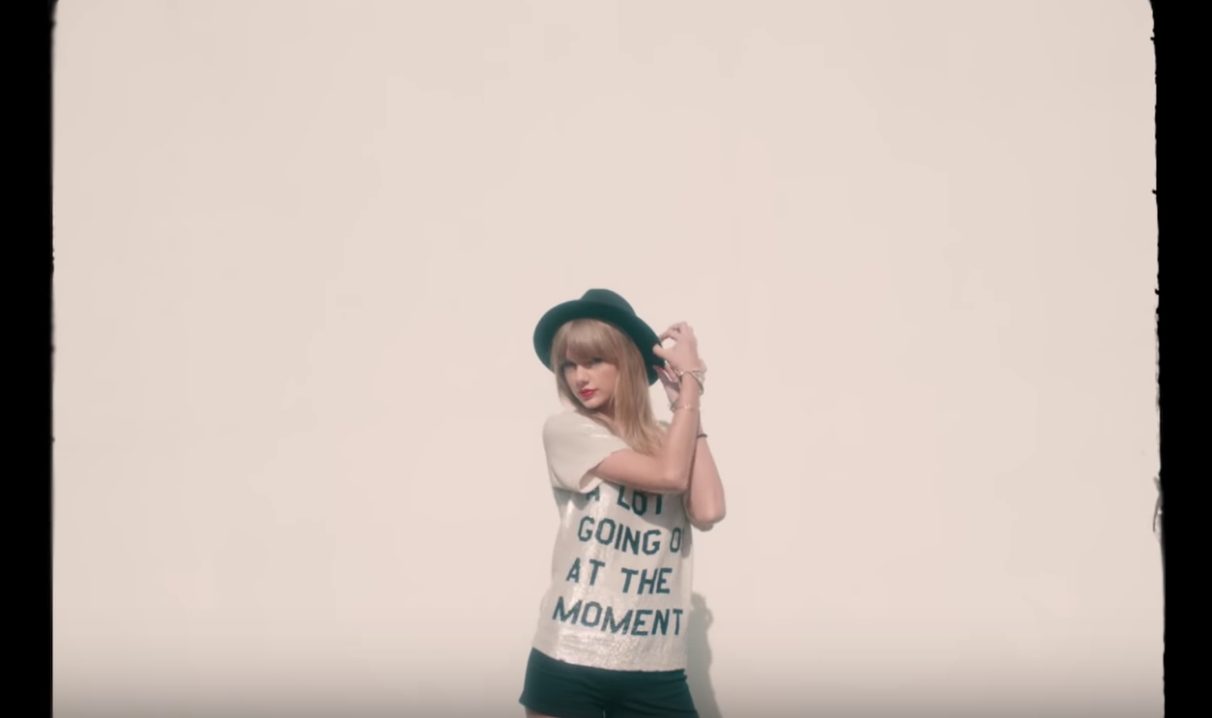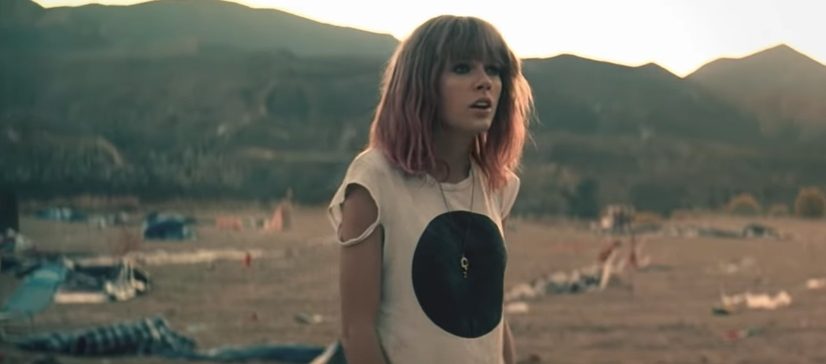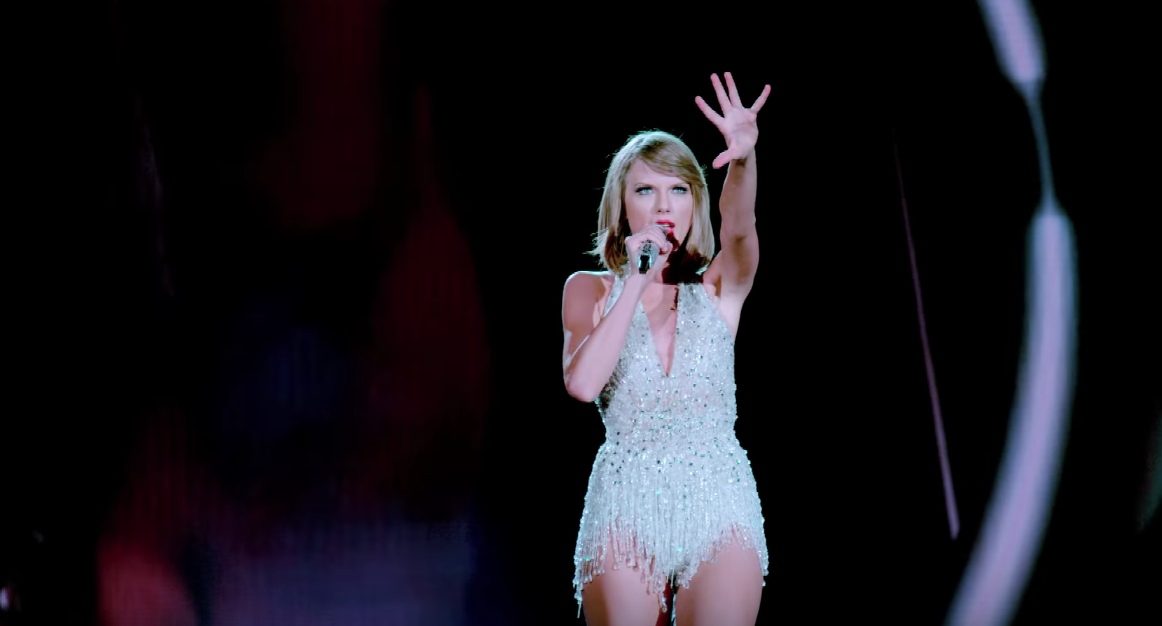SUMMARY
This is AI generated summarization, which may have errors. For context, always refer to the full article.

There are records we encounter in life where its creativity and cogence become secondary to the moment we chanced upon it. Its artistry, although not really disregarded, becomes the soul and breadth of experience.
I was 22 myself when Taylor Swift released Red in 2012. Fresh from college and new to the workforce, I still remember how much Swift’s coolly-phrased hook related to my life: “We’re happy, free, confused, and lonely at the same time.”

For a non-Swiftie like me, it was a revelation. Here was a song that spoke to me, not only for its exact capture of a nascent yuppie beginning to voyage through his roaring twenties, but for its fearless and nonchalant admittance of recklessness while owning up to youthful confidence. While singing about cool kids, she haughtily asks, “Who’s Taylor Swift anyway, eww?”
That month, I had a white t-shirt made, similar to what Taylor wore in the song’s music video. It read, “Not A Lot Going On At The Moment.”
I spoke too soon. Within that year, I got laid off from my first job, burned bridges with some college friends, and was nursing from a bad breakup. Taking a bus ride home to Baguio from Cubao, desolate, depressed, and heartbroken, Red was the album playing on my Shuffle.
It’s an effusive record throbbing with delight and enthusiasm that can only spring from genuine innocence: it makes one want to extort experiences worthy of youthful energy—the kind that encapsulates a generation’s values and passed to grandchildren during Christmas Eve.
Taylor has a stellar discography by now, but Red stood ground as the evidence of her genius. In I Knew You Were Trouble, she sings, “He’s long gone, when he’s next to me/ And I realize the blame is on me.” She does one thing then sings the opposite.
Her space is both the physical and the aesthetic: the one we share, and her truth—the one she invites us to.

For most millennials, and those born in the onset of what is now called the Generation Z, Taylor is a fixture. Some critics would point out her luck with the proverbial genetic lottery: blonde hair, blue eyes, and that all-American look (she towers at 5’10” and was a “sample size” the first time she graced the cover of American Vogue in 2012).
But this surface cracks into a deep well when she picks up a guitar. Her songwriting skills are personal and platonic, ingenuous and tempestuous. The lyrics, when devoid of tune, may be read as Sylvia Plath’s poems for its visceral honesty and unabashed confessions.
Trouble, trouble.
The old Taylor can’t come to the phone right now, but her country-girl persona is the one that eminently stayed with us about her musical pilgrimage. Her talents lie in her poetic license and her agency of teasing us with what the paparazzi and critics say about her, and what we make out of her based on her songs. During a war of sound-bytes and evidences with Kim and Kanye, Taylor used the right term to encapsulate such experience: it’s a narrative.
In an interview with Vanity Fair, Taylor spoke about her writing process: “I’ve never thought about songwriting as a weapon,” she said. Yet her albums are similar to creative nonfiction essays. Her songs strongly reference, or throw shade about, people she welcomes in (and ousts off) her life.
It’s a tell-all memoir glittery with clues and hints. She tells us nothing, really. We take part in her narratives by listening, but the meanings we make out of it are left to us alone.
Like many remarkable artists, Taylor maintains her subjects and methods in the dark, leaving enough room to make these works ours. Her songs are far-reaching and encompassing like they are about us— just us —all along.
At this point, Taylor has departed from Nashville with its violins and live drums. 1989 sets the scene with New York, inviting us to a tour of hot clubs as she shares her self-reflections of lost loves while rekindling doe-eyed dreams. The tracks are steamy with her collaboration with Max Martin: an abundance of drum programming, bombastic choruses, and unexpected chord progressions.
Despite the accolades, Swift remains surprising and unswayable, but laudable nonetheless. Her singles were add choices, surprising fans and alienating critics. In 1989, for instance, she offered New Romantics as a bonus track.
Her first single off Reputation was its weakest critically, but shadiest contextually.
I would always tell people that Style was my favorite record in 1989, but New Romantics, the single not offered in her album’s standard version, was the sound that defined it. It is a curtain call to a series of pop turnovers, her most beautiful product emerging from her defeat at the 2014 Grammys. (She openly admitted after the ceremony that she thought she heard Red win as Album of the Year. It was actually Daft Punk’s Random Access Memories—RAM.)

This is Taylor we are talking about. No introductions. But she does not rest on her laurels. Her image is developed by her great work ethic and collected disposition, which is not always to her advantage. Her ability to denounce exes who have erred her earned the respect of a legion of fans — celebrity and everywoman. At later point, she has outgrown her victim persona, and grasped that agency is more powerful, and that power fends off from the self.
In the 1989 World Tour, she posed an image using the line in one of her song’s music video: “She lost him but she found herself and somehow that was everything.”
The song was Out of the Woods, an undulated pop song seething in synth. The verses pleading for consideration from an apparently unsympathetic partner. It was almost pitiful – only to rise towards the chorus where she asks, “Are we out of the woods?” and “Are we in the clear yet?”
I read a magazine feature before that considered it one of Swift’s worst lyrics, but a simple couplet is its own statement from a usually verbose singer. Swift is a learned lyricist who knows her grammar. This silver-tongued lass is sensitive about it.
Case in point: She blasted the writers of the Princeton Review SAT prep book when they wrongfully included lyrics from Fifteen into their list of pop songs with wrong grammar. When she was asked by Vogue in their “73 Questions” what class she would have handled should she be a teacher, her answer was English.
Her metaphors are what made her most poetic… which brings us to Out of the Woods.
Taylor’s lyrics are layered with delish themes, each one a semiotic extravaganza. Of course, literally, the juxtaposition of the “woods” and “clear” are common in Taylor’s imagery, her liking for paradoxes, what is technically called “binary oppositions.”
These antonyms, profuse in her lyrics, define Taylor’s songwriting. She assigns emotions, people, and experiences in categories. Each element ultimately ending up in a contrast, and these differences exposing her themes. It positions Taylor as a storyteller that enforces roles. It places the listener on an empathic and participative plane, making them identify easily in what categories they belong to.
“Out of the woods” is a figurative language usually associated with the way we soften the hospital inquiry, “Is the patient out of the coma or life-and-death situation?” It is akin to Taylor asking, “Are we still okay in this relationship?”
In contrast, what expression do doctors use before a defibrillator is used on a patient in an attempt to revive him or her? Like the way we revive aforementioned dying relationship, we say “Clear”.
Swift furthers this image in the bridge by referencing “twenty stitches and a hospital wound.” Genius.
Thus, when Taylor’s Reputation came out last year, it served as the refreshing, edgy, and maximal follow-up to the mature pop persona she gave birth to in 1989. However, despite her wise and empowering use of the elements that haters and critics used to pull her down, it is obvious Taylor is starting to lose control.
She may have cleaned her social media for a fresh start, yet the album sounded like a Russian roulette borrowing sounds and symbols from previous albums. She wanted to control the narrative, and in doing so, sacrificed the ability to come up with a novel record. The album, unlike the ones before it, was snubbed in most award shows.
The “Reputation Stadium World Tour” is nearing its close with only two shows in Asia (it will end in Tokyo), yet Taylor remains staunch with a hard-muscled stature thanks to a discography that ultimately documented her life, relationships, and travails.
Which is not to say that Taylor’s feet are nowhere on good ground. In fact, she is now more human than ever. She had “hit the brakes too soon,” but she’ll surely revive, and we’ll surely hear about it soon in tune. There is also comfort in knowing that parts of the “old Taylor” are still emerging from singles like Call It What You Want To and Delicate.
One afternoon, in a coffee shop, Taylor’s All Too Well played. I sang to it. I couldn’t help it. My mom introduced me to long, wordy songs like her favorite American Pie, and this track was length and longing at its finest. She performed it at the 2014 Grammys and the headbanging was sensational.
It is a posttraumatic break-up anthem, and it was Taylor at her best: her tender reminiscence at the start that summed up a movie-perfect love story—a scarf as a memento, dancing in the refrigerator light, and meeting his mother.
But as swiftly as it had been erected, the love castle crumbled down towards the smashing, unforgettable bridge where Taylor spat the lines in turbulence: “You called me up again just to break me like a promise/ So casually cruel in the name of being honest”.
The barista was impressed. “That was my girlfriend’s favorite song,” he said. “She sang it in a karaoke at a friend’s wedding. That’s how we met.”
I was charmed. There are no doubts about it: Like a signpost gleaming in the dark, Taylor’s songs are part of this generation’s soundtrack.
Which one is yours? – Rappler.com
Ivan, 23, is currently the editorial adviser of Pulse, the official student publication of the University of Baguio and an Online Marketing Specialist at an outsourced marketing company in Baguio City. He was anthologized once in the US for his creative nonfiction works. His essays have also been published in theBaguio Midland Courier, Philippine Star’s My Favorite Book, and the Philippine Daily Inquirer’s YoungBlood.
Add a comment
How does this make you feel?
There are no comments yet. Add your comment to start the conversation.